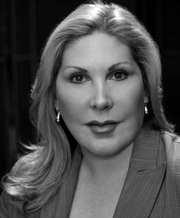As Facebook makes its $100bn debut on the stock market, the ROI of advertising on the social media site remains uncertain, says Wendy Lewis
Estimates are that 15% of the total world population is on Facebook, the little social networking site that has its roots in the dorms of Harvard University in 2004. There is a shrinking minority who still doubts the profound impact that Facebook has had on every aspect of our lives, including überinvestor Warren Buffet who considers it to be “just a fad”, and General Motors which just pulled its $10m Facebook ad campaign.
But Facebook literally has its tentacles in almost everything on the web and influences the way we communicate with friends, family, colleagues and customers. It is not just the site itself that is so omnipotent but also its powerful reach into websites, shopping carts and mobile devices. We have witnessed the “are you on Facebook?” questions morph into the ubiquitous “Facebook me” statement as it is now assumed that everyone is on the social network. And it is way cooler than “text me”, “email me” or “call me”.
Facebook has more than 900 million users who log in at least once a month and its chief source of revenue is, you guessed it, advertising. Ad revenue nearly doubled in 2011, yet advertisers gripe that it is difficult to calculate return on investment (ROI). Facebook pages are rising in popularity as an extension of a brand website and even a microsite for a special offer, partnership or initiative. There is no question that brand pages can attract customers and drive demand for products and services but the debate is about how brands can directly track Facebook generated sales.
The challenge is that unless you are buying into paid Facebook services such as sponsored stories, display ads and offers, brand pages don’t generate revenue for Zuckerberg et al. Facebook’s revenue is tied to ads that are pitched to the user’s age, geography, interests, activities and friends. These ads compete directly with Google’s search based, pay per click ads and so far Google is on top.

Wendy Lewis, president, Wendy Lewis & Co Ltd
But as we have witnessed in the fast paced world of social media marketing, the one constant is change. The Zuckerberg organisation has demonstrated a willingness to change course, dissolve poor performers, identify their weaknesses and fill voids through partnerships and acquisitions such as the photo sharing site Instagram and the mobile platform Tagtile. More acquisitions and consolidations can be expected in the near future. Ads are surely not the only source of revenue on Facebook’s post IPO agenda.
The current Facebook brand page design, relaunched on 31 March 2012, allows brands to expand posts to feature more prominently on the page. Page admins can customise how stories appear by pinning them to the top of the timeline, starring them or even hiding them from view. By hovering over a post and using the star icon, it can be featured, which creates what Facebook now calls a ‘milestone’. Milestones can be added to the timeline to share important moments in the history of the brand. The ultimate goal, according to Facebook, is to display your best content or elements that keep users engaged so they stay on the page and keep coming back.
A maximum of 12 apps can be highlighted, including blanks that can be customised for shopping, coupons, contests, live chats, catalogue, in-store events and more. A new admin panel offers analytical tools to shed light on exactly how customers interact with a brand’s page by publicly displaying metrics on those interactions. This demonstrates Facebook’s understanding that it needs to create offers that cater to the needs of business users in terms of improved efficiency, simplicity and affordability. I would argue that ROI needs to calculate not only the funds to buy into Facebook’s business services but also the time and labour needed to make it work, which can be insurmountable for small brands.
While Google+ struggles to find its identity and Twitter’s popularity waivers, Pinterest has emerged out of relative anonymity as the next big thing and Klout is beefing up its efforts to promote engagement. Facebook remains the primary social networking and premier social commerce platform to build awareness and touch consumers in a meaningful way. More brands are looking at Facebook as the ‘go to’ place to learn more about their customers, get valuable market research and product feedback and watch what their competition is doing.
Even if by some twist of fate Facebook goes the way of Yahoo, AOL or MySpace, social networking is not a passing fad. Rather, it is a way of life, especially among the under 40 set. Whether Facebook will maintain its rank as the leader in the sector is uncertain. However, I wouldn’t bet against team Zuckerberg’s skill at navigating these shark filled waters just yet. After all, $100bn buys a lot of technology and talent.



